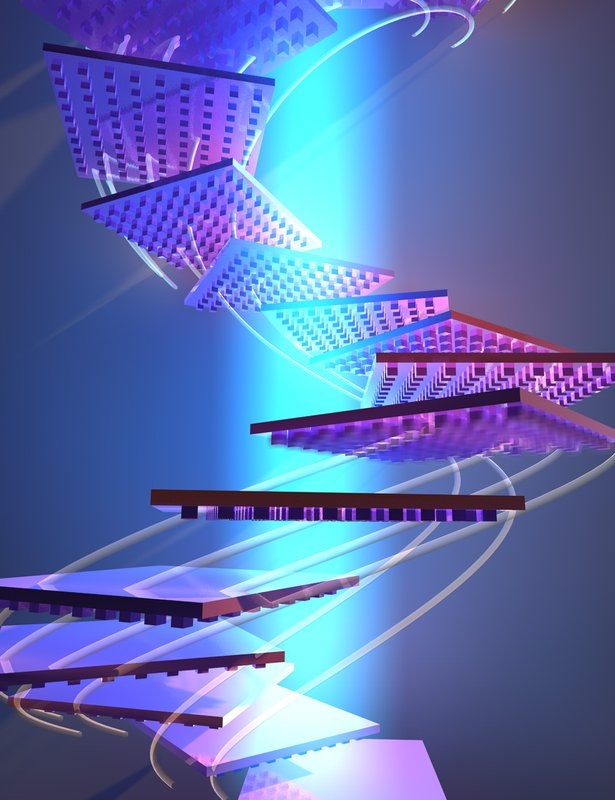Mar 20 2019
By producing certain nanoscale patterning on the surfaces of objects, researchers at the California Institute of Technology (Caltech) have developed a new method to levitate and push objects with the help of light.
 Conceptual illustration of a nano-patterned object reorienting itself to remain in a beam of light. (Image credit: the Atwater laboratory)
Conceptual illustration of a nano-patterned object reorienting itself to remain in a beam of light. (Image credit: the Atwater laboratory)
Although the work is still in its theoretical stage, it definitely brings researchers closer to designing a spacecraft that can one day reach the closest planet beyond the solar system in 20 years, all driven and accelerated simply by light.
The results of the study have been reported online in the March 18th, 2019 issue of the journal Nature Photonics. The study was carried out in the laboratory of Harry Atwater, a Howard Hughes Professor of Applied Physics and Materials Science in the Division of Engineering and Applied Science of Caltech.
Years ago, the development of what is known as optical tweezers allowed researchers to move and exploit very small objects, for example, nanoparticles, by utilizing the radiative pressure from a sharply concentrated ray of laser light. This study laid the groundwork for a Nobel Prize in Physics in 2018. Optical tweezers, however¸ are only capable of controlling extremely tiny objects and only at extremely short distances.
An analogy was given by Ognjen Ilic, the first author of the study and a postdoctoral scholar: “One can levitate a ping pong ball using a steady stream of air from a hair dryer. But it wouldn't work if the ping pong ball were too big, or if it were too far away from the hair dryer, and so on.”
With this latest study, it becomes possible to manipulate objects of various sizes and shapes—ranging from micrometers to meters—by means of a light beam. Here, the key is to create certain nanoscale patterns on the surface of an object. This nanoscale patterning interacts with light such that when the object is disturbed, it reorients itself, producing a restoring torque to remain in the beam of light. Therefore, instead of needing highly focused laser beams, the patterning of the objects is designed to “encode” their own stability. Moreover, the light source can be millions of miles away.
We have come up with a method that could levitate macroscopic objects. There is an audaciously interesting application to use this technique as a means for propulsion of a new generation of spacecraft. We're a long way from actually doing that, but we are in the process of testing out the principles.
Harry Atwater, Howard Hughes Professor of Applied Physics and Materials Science, Division of Engineering and Applied Science, Caltech
Atwater is also the director of the Joint Center for Artificial Photosynthesis.
Theoretically, the spacecraft can be patterned with nanoscale structures and expedited by a laser light based on Earth. Without having to carry fuel, the spacecraft can possibly reach extremely high, and even relativistic speeds and potentially travel to other stars.
Atwater further believes that the novel technology could be used here on Earth to allow quick developments of ever-smaller objects, such as circuit boards.
The paper is titled “Self-stabilizing photonic levitation and propulsion of nanostructured macroscopic objects.” The Air Force Office of Scientific Research funded the study.